Discover 11 hidden attractions, cool sights, and unusual things to do in Kalisz (Poland). Don't miss out on these must-see attractions: Muzeum Okręgowe Ziemi Kaliskiej, Muzeum Osiakowskich, and Teatr im. Wojciecha Bogusławskiego. Also, be sure to include Rezerwat archeologiczny Zawodzie in your itinerary.
Below, you can find the list of the most amazing places you should visit in Kalisz (Greater Poland).
Table of Contents
Muzeum Okręgowe Ziemi Kaliskiej
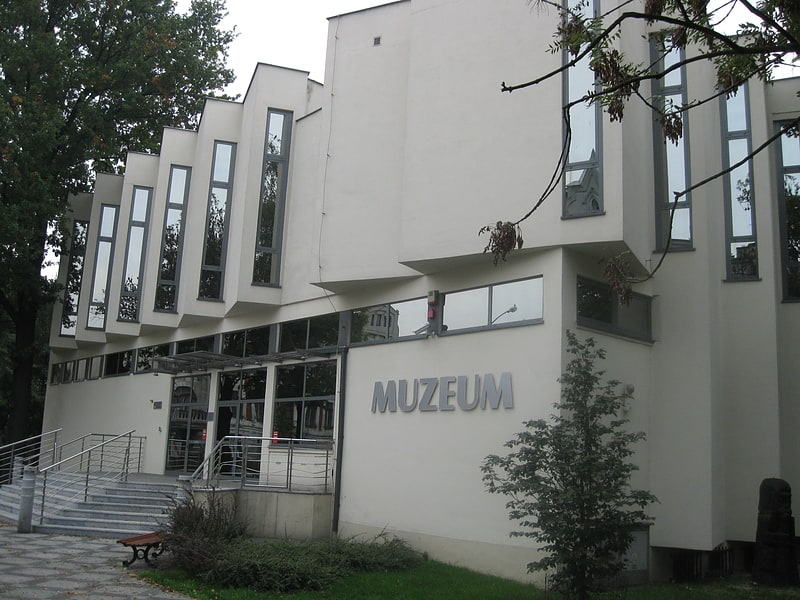
District Museum of the Kalisz Area in Kalisz - a district museum in Kalisz founded in 1906 as the Archeological Museum, a provincial cultural institution, entered in the National Register of Museums in 1998; one of the oldest regional museums in Poland, documents the history of Kalisz and Kaliska.
From 1997 to 2015, the museum's director was Jerzy Aleksander Splitt; since 2015, the director has been Sylwia Kucharska.
Address: ul. Tadeusza Kosciuszki 12, 62-800 Kalisz
Muzeum Osiakowskich
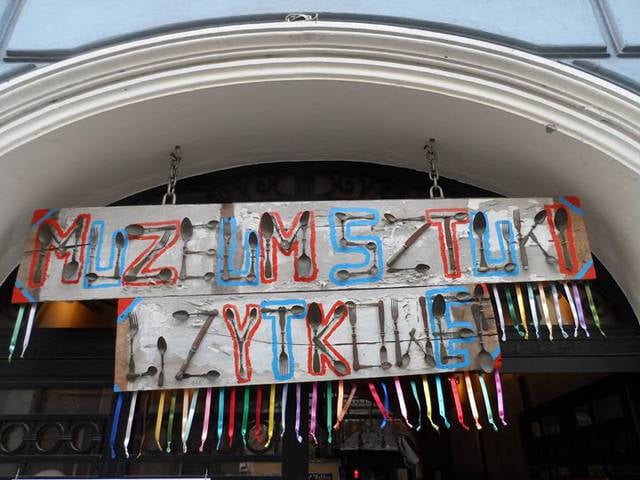
Museum, History museum
Address: Garbarska 2, 62-860 Kalisz
Teatr im. Wojciecha Bogusławskiego
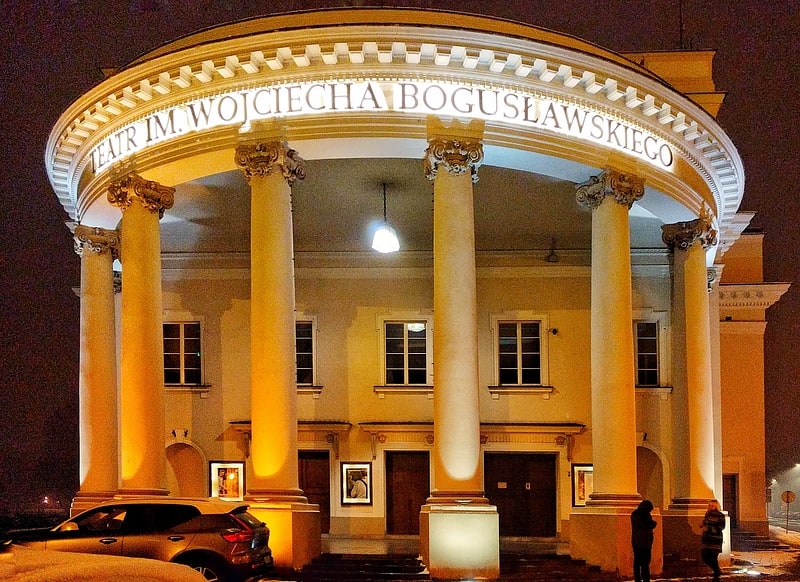
Wojciech Bogusławski Theatre in Kalisz - theater in Kalisz, provincial institution of culture, founded in 1801 by Wojciech Bogusławski, honorary national stage, the third oldest dramatic theater in Poland; since 1936 it bears the name of the founder, since 1961 it organizes Kalisz Theatre Meetings; the theater building, erected in 1920-1923 according to a design by Czesław Przybylski, was entered in the register of monuments in 1979.
Magda Grudzinska was the director of the theater from 2014 to 2017; Bartosz Zaczykiewicz has been the director since September 1, 2017.
Address: Pl. Bogusławskiego 1, Kalisz
Rezerwat archeologiczny Zawodzie

Zawodzie Archaeological Reserve - an archaeological reserve in Kalisz, Zawodzie, a branch of the District Museum of the Kalisz Area in Kalisz; documents the history of archaeological research conducted on the site of an early medieval castle at Zawodzie.
The first fortified settlement at Zawodzie was erected in the years around 850-860.
Address: Bolesława Pobożnego, Kalisz
City Hall
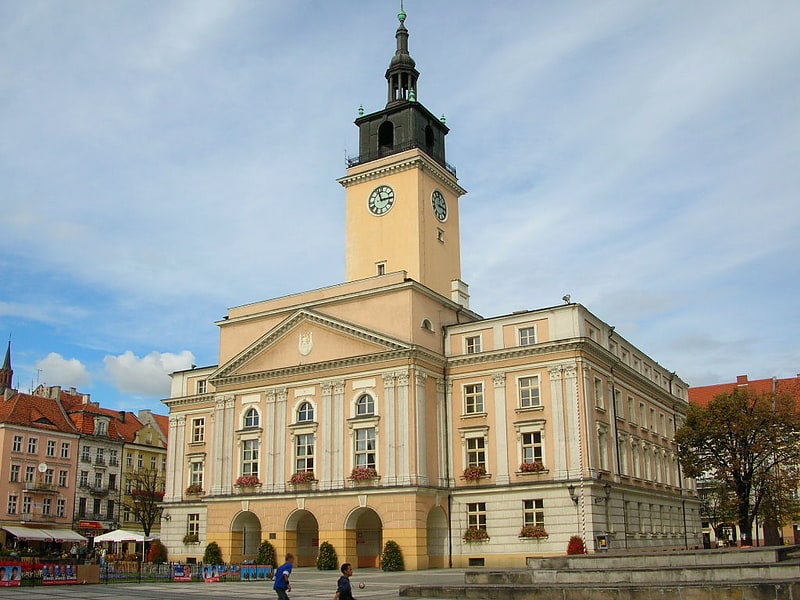
Kalisz Town Hall - a town hall in downtown Kalisz, neoclassical, built in 1920-1924 by the efforts of the Committee for Reconstruction of Kalisz, designed by Sylwester Pajzderski based on earlier designs by Stefan Szyller; entered in the register of monuments in 1993.
Address: 20 Główny Rynek, Kalisz
Park Miejski
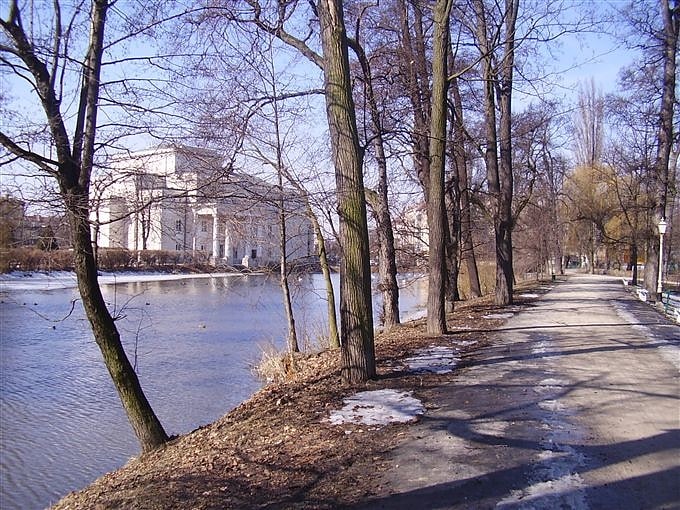
Kalisz City Park - a city park in Kalisz, in Śródmieście (downtown), on the border of Rajsko and Rypinek, on the banks of the Prosna, Swędrnia, Bernardyński Canal, Rypinkowski Canal and Przekopem, founded in 1798, enlarged and transformed many times; in the 19th century considered the most beautiful Polish public garden; in the oldest part maintained in the style of an English garden; the oldest city park in Poland, entered in the register of monuments in 1964.
The 24.28 ha City Park includes the Old Park (1798), the Great Park (1842), the former Pomological Garden (1885), the New Park (1900), the Ignacy Jan Paderewski Park (1912), the Sports Park (1926), and the eastern part of the Planty (1942).
Cmentarz ewangelicko-augsburski
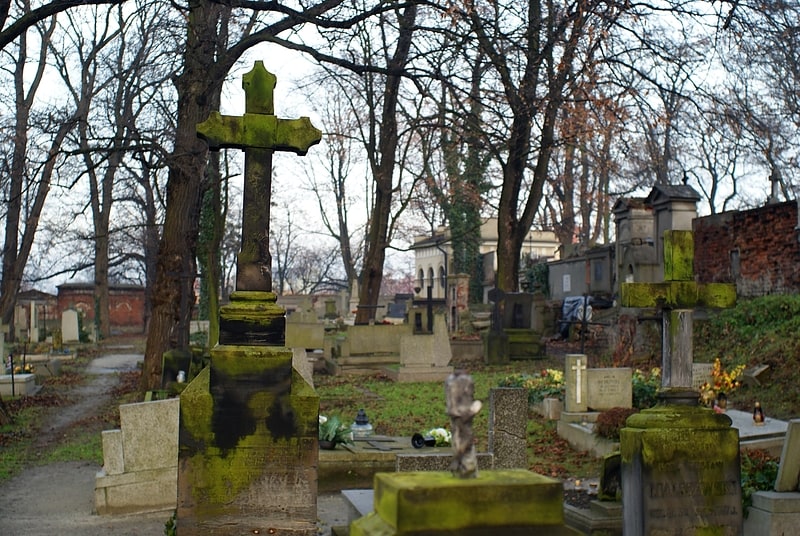
Evangelical-Augsburg cemetery in Kalisz, Luterska Mountain - Protestant cemetery in Kalisz, on Rogatka Street, established before 1689; one of the oldest Polish cemeteries, the oldest surviving cemetery in Kalisz, a monument of sepulchral art entered in the register of monuments in 1998; ashes of many distinguished Kalisz and Greater Poland citizens rest there.
The establishment of a Protestant cemetery located behind Wroclawskie Przedmiescie is related to the fact that after 1550 Protestants of various denominations, including Czech Brethren, Polish Brethren, Calvinists, Lutherans, and even Scottish Puritans, settled in Kalisz and its surroundings (e.g. in Koźminek).
The oldest preserved tombstone is the monument of Wojciech Greffen (died 1817), lieutenant colonel of the Polish Army, Kościuszko insurgent, decorated with the Virtuti Militari order.
Along the main avenue on the east-west axis, there are family tombs of almost all the industrialists and wealthy craftsmen of Kalisz from Evangelical families, as well as high tsarist officials and military officers of German origin and Lutheran religion. The tombs by the southern wall bordering with the Catholic cemetery are interesting: they are in fact the burial places of the same families whose members were partly of Catholic and partly of Evangelical faith and were buried in the appropriate cemetery - the crypts are not separated by a wall, so the deceased were buried together and at the same time, according to their faith, in "their" cemetery. Nowadays, most of the tombs on the Catholic side are bought by new users and bear different names.
Jan Bernhard, Gustaw Arnold Fibiger I, Gustaw Arnold Fibiger III, Emil Ordon, Konrad Wünsche, Ludwig Adolf Neugebauer's mother, and Alexander Emil Ulrych, a Buchenwald prisoner, are buried in the cemetery.
The newer, southern part of the cemetery contains graves of German settlers resettled in Kaliska from the Baltic States during the German occupation (1939-1945).
Cerkiew św. Apostołów Piotra i Pawła
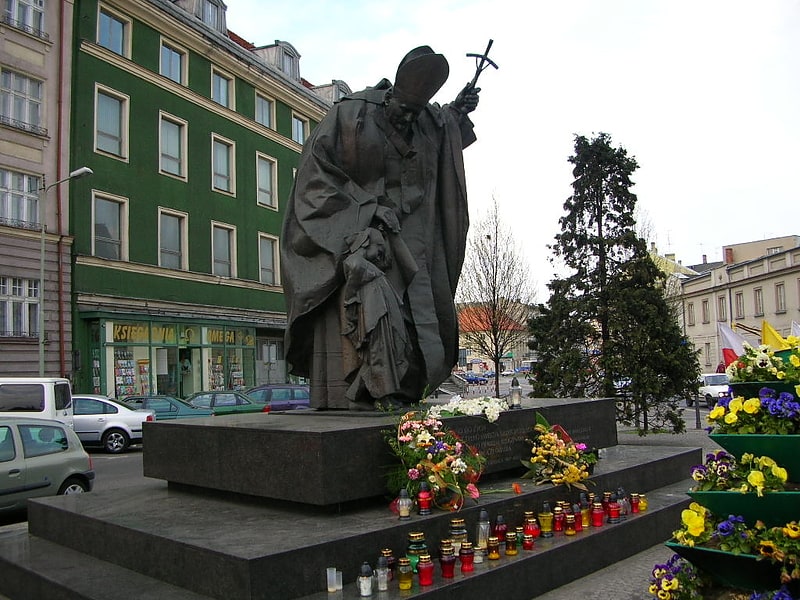
Orthodox Church of Saints Peter and Paul in Kalisz - an Orthodox parish church in Kalisz. It belongs to Łódź deanery of Łódź-Poznan diocese of the Polish Autocephalous Orthodox Church; entered in the register of monuments in 1994.
Located in the former Warszawskie Przedmieście in Kalisz, at 1 Niecała St. The neo-Romanesque building was erected in 1928-1930 according to the project of Michał Zenowicz. It was consecrated in its raw state on January 8, 1930; during the next 8 months it was completely equipped.
In the construction of the church used the material from the church of St. Apostles Peter and Paul in Kalisz, demolished in 1928. Part of the equipment comes from the church in Sieradz, demolished in the 1920s.
Inside the church there is an iconostasis, coming from the church in Sieradz, restored in the early XXI century. Iconostasis from the demolished St. Peter and Paul's Cathedral was placed in 1924 in the church of St. Nicholas in Poznan.
In the years 1999-2004 an external renovation of the church was carried out. Since 2004 the church has been illuminated.
During the festivities of the Feast of Nesvizhna Street in Kalisz (second Saturday of September), Divine Liturgy is served in the temple, followed by a concert of Orthodox music.
Address: Niecała 1, 62-800 Kalisz
Kościół św. Wojciecha
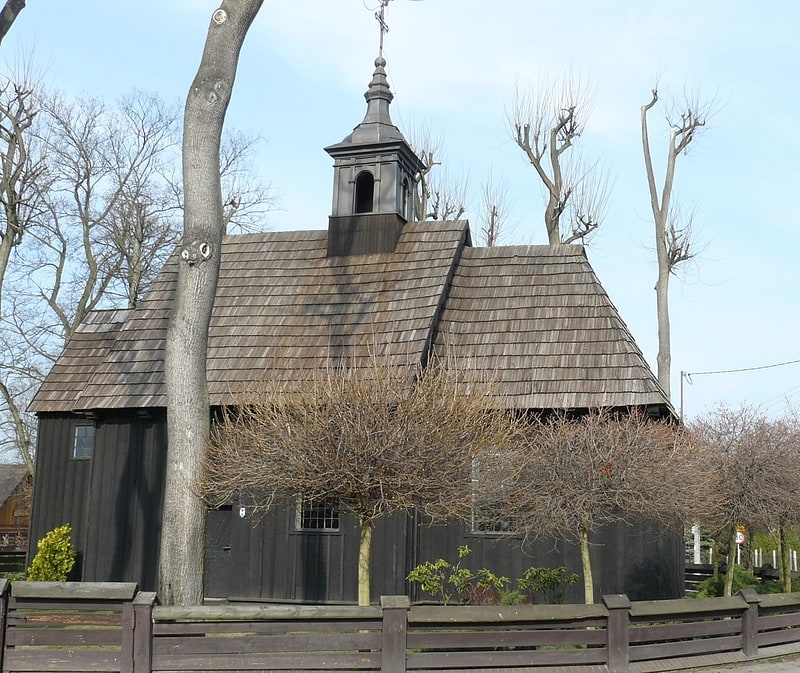
St. Adalbert Church in Kalisz - church in Kalisz, Zawodzie, next to an archeological reserve; wooden, with a log structure, boarded with osmolated pine lumber; built in 1798.
The original building was probably erected around 1200 and it served as a parish church, which was, however, abolished in 1406 by the archbishop of Gniezno, Mikolaj Trba, and it fell into ruins. An inscription on one of the ceiling beams informs about the year the present building was built: Anno Domini 1798 die 24 Aprilis Sebastjan Zieliński founder of this church, potter with all parishioners. Carpenter Jan Kejner. Church has rectangular nave, presbytery with vestry, signature tower built in 1894.
The Romanesque stoup probably comes from the furnishings of the Collegiate Church of St. Paul the Apostle.
In 2017, an 18th century cemetery was discovered under a layer of soil in the church during archaeological work.
Address: 103 Bolesława Pobożnego, Kalisz
Galeria Sztuki Napora
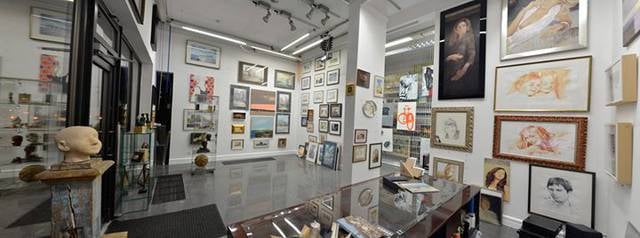
Museum
Address: Ul. Polna 26, Kalisz
Most Kamienny
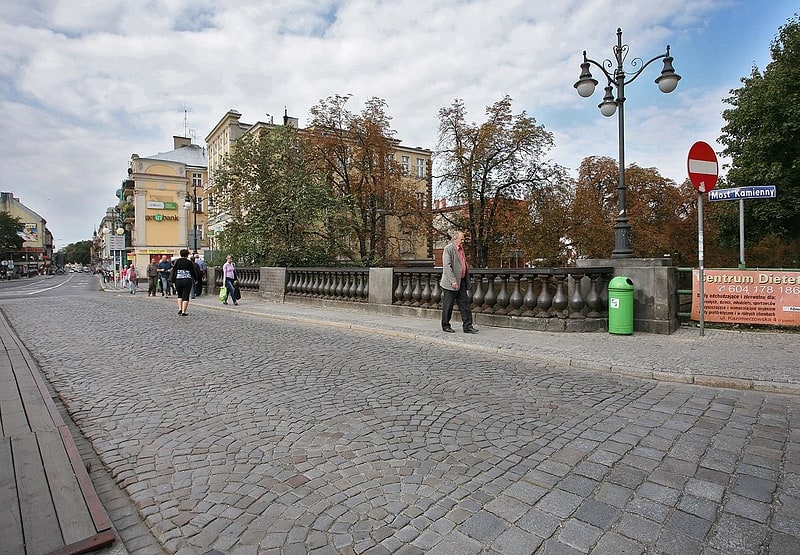
Stone Bridge - a road bridge over the Prozna River in Kalisz, in the course of Śródmiejska Street, located on the border between Śródmieście I and Śródmieście II; a classicist bridge, built from March 1824 to August 1825 under the direction of Franciszek Reinstein, and designed by Sylwester Szpilowski. It has iron balustrades and a cobblestone surface; the traffic on it is one-way towards the town hall. The plaque's pedestal bears Kalisz's coat of arms and Latin inscriptions commemorating the construction, which read in Polish: The citizens of Kalisz wish that this bridge erected at the public expense of the city, begun in March 1824, and completed in August 1825 under the name of the most excellent Alexander I, emperor and king, father of the fatherland and protector of this city, be a witness for posterity of their gratitude and attachment. In the past there was a drawbridge in its place. Listed in the register of historical monuments in 1964, it is the oldest existing bridge in Kalisz.